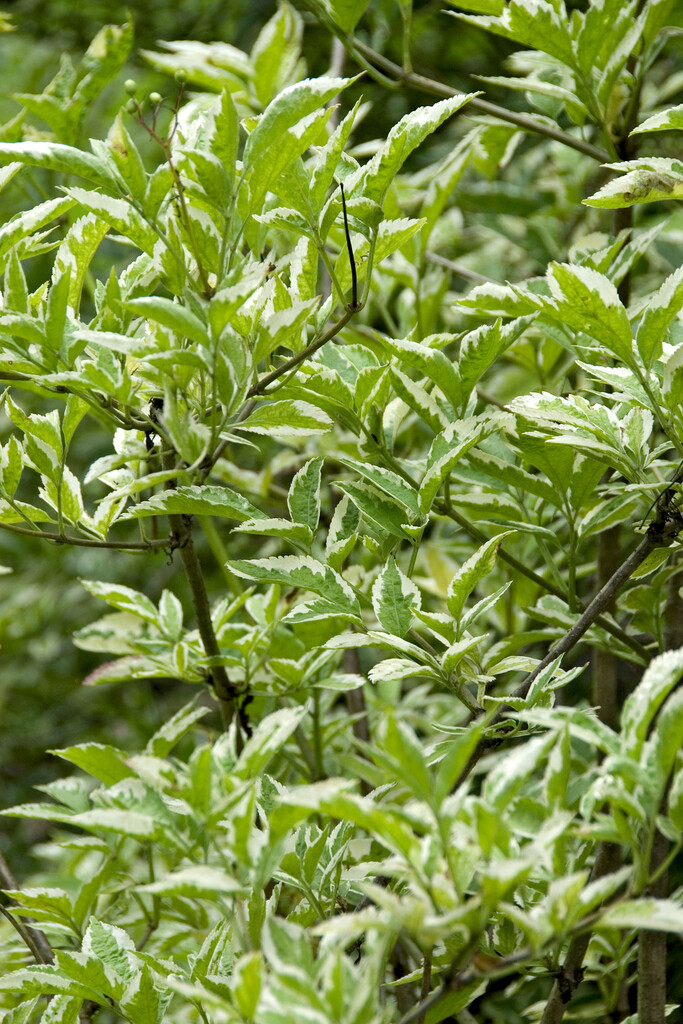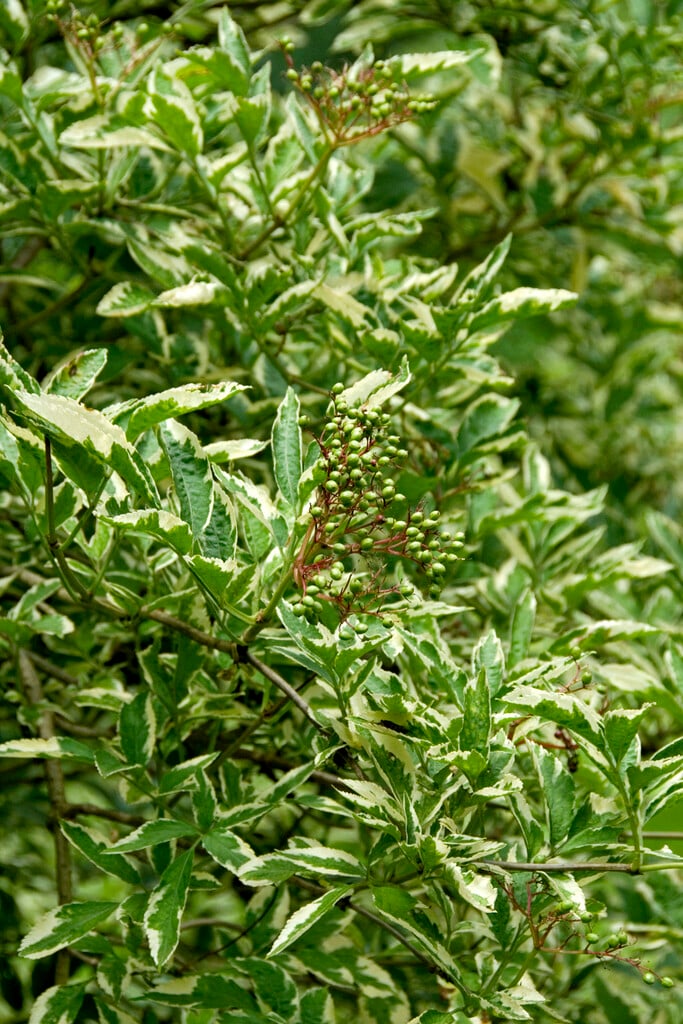Sambucus nigra 'Marginata' (v)
elder 'Marginata'
A bushy, deciduous shrub or small tree with divided, pinnate variegated leaves with a yellow margin. Frothy panicles of tiny, scented, white flowers in summer are followed by round, glossy, black fruit in autumn.
Synonyms
Sambucus nigra 'Albomarginata'Sambucus nigra 'Albovariegata'
see moreSambucus nigra 'Argenteomarginata'
Sambucus nigra 'Variegata'
Size
Ultimate height
2.5–4 metresTime to ultimate height
5–10 yearsUltimate spread
2.5–4 metresGrowing conditions
Moisture
Moist but well–drained, Well–drainedpH
Acid, Alkaline, NeutralColour & scent
| Stem | Flower | Foliage | Fruit | |
| Spring | Variegated Yellow | |||
|---|---|---|---|---|
| Summer | White | Variegated Yellow | ||
| Autumn | Variegated Yellow | Black | ||
| Winter |
Position
- Full sun
- Partial shade
Aspect
East–facing or North–facing or South–facing or West–facing
Exposure
Exposed or Sheltered Hardiness
H6Botanical details
- Family
- Viburnaceae
- Native to GB / Ireland
- No
- Foliage
- Deciduous
- Habit
- Bushy
- Potentially harmful
- Harmful if eaten, fruit/flowers edible if cooked. Wear gloves and other protective equipment when handling Pets (dogs, cats): Harmful if eaten, fruit/flowers edible if cooked - for further information and contact numbers regarding pets, see the HTA guide to potentially harmful plants
- Genus
Sambucus can be herbaceous perennials, deciduous shrubs or small trees, with pinnate leaves and umbels or panicles of small creamy-white flowers followed by red, white or black berries
- Name status
Accepted
How to grow
Cultivation
Will grow in any moderately fertile, humus-rich, well-drained soil. Thrives on very chalky soil
Propagation
Suggested planting locations and garden types
- Architectural
- City and courtyard gardens
- Wildlife gardens
- Cottage and informal garden
- Low Maintenance
Pruning
Pruning group 1, or suitable for coppicing every three to four years to restrict size and improve foliage display
Pests
May be susceptible to aphids and glasshouse red spider mite
Diseases
May be susceptible to verticillium wilt and honey fungus
Love gardening
Sign up to receive regular gardening tips, inspiration, offers and more
View our Privacy Policy
Get involved
The Royal Horticultural Society is the UK’s leading gardening charity. We aim to enrich everyone’s life through plants, and make the UK a greener and more beautiful place.

